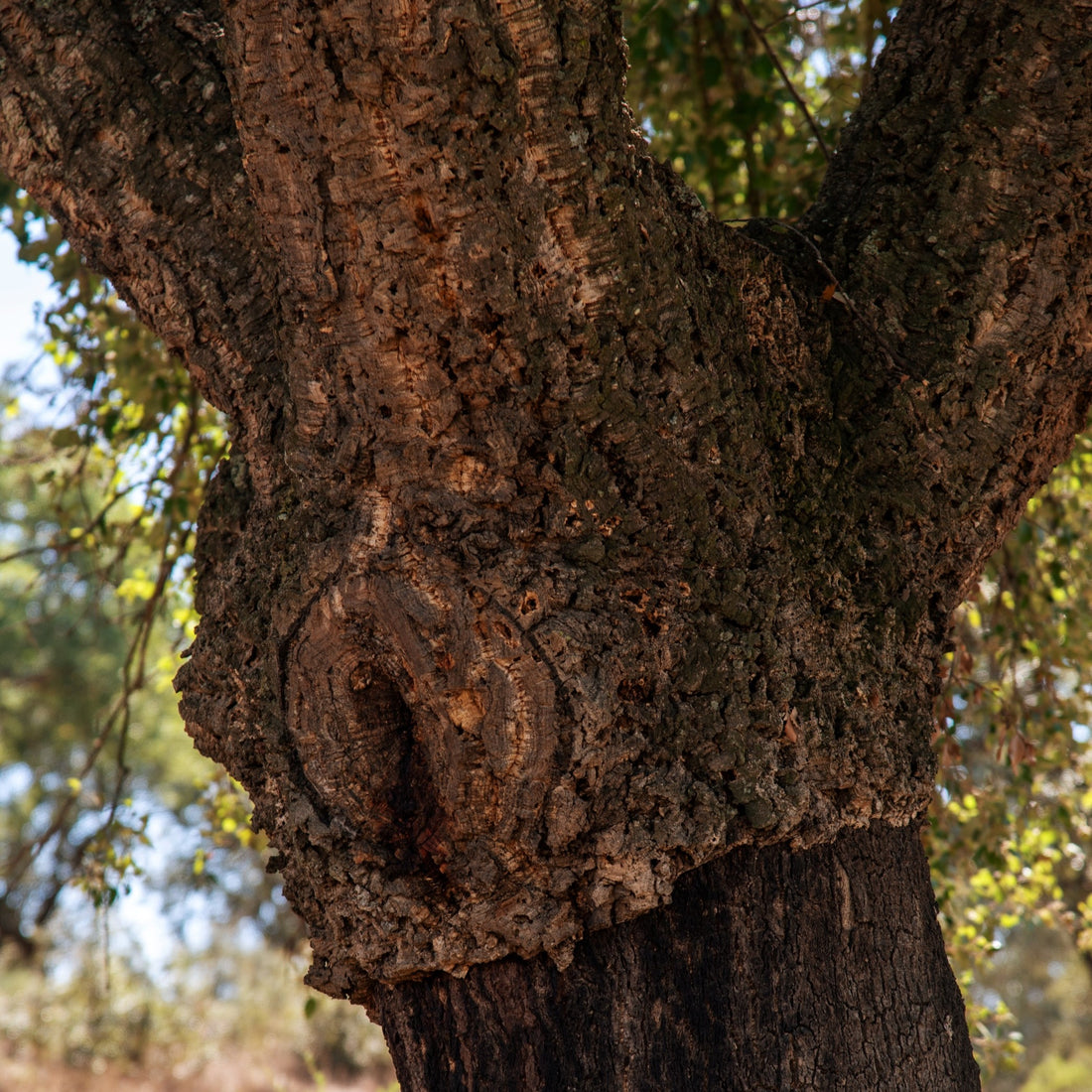
From Cork to Cork: Portuguese Tradition in the World of Wines
Share
The centuries-old tradition of cork in Portugal makes it one of our country's most iconic natural resources. Originating from the Cork Oak, cork plays a vital role in the wine industry, being the fundamental material in the production of cork stoppers. In this article, we invite you to join this fascinating journey, from the tree that produces it to its transformation into corks that help preserve the quality of wines.
The Cork Tradition in Portugal
Portugal is not only recognized for being a great tourist destination or for producing distinctive and high-quality wines, part of its international recognition is its beautiful and ancient cork tradition. Cork production is an intriguing part of the country's culture and economy. The Cork Oak (Quercus suber), the tree that provides this resource, found its home in Portugal and today is spread across the south of the country creating the largest cork oak area in the world. This tradition is deeply rooted in Portuguese lands, with many families dedicating themselves to this industry from generation to generation.
The Cork Oak
From nature to the bottle, cork follows an interesting path where human work is in perfect harmony with nature and, of course, with technology. The cork oak is a tree known for its thick and rough bark, which is the source of cork. It is an evergreen tree, adapted to Mediterranean climatic conditions. The cork oak is very resistant and durable, and can live on average for around 200 years. Out of curiosity, to be "decorked" for the first time, the cork oak must be at least 25 years old. Furthermore, these trees are also appreciated for their excellent bark regeneration capacity.
After the first "decorking", every nine to twelve years, the cork can be removed again, necessarily between the months of May and August, without damaging the cork oak, making it a sustainable source of raw material. This period is characterized by a time when the tree is most active in terms of its growth.
In Portugal, cork oaks thrive in the southern region, mainly in Alentejo. The vast expanses of this region are covered in cork oak forests, which provide a magnificent view and provide a habitat rich in biodiversity.
From Cork to Stopper
Making stoppers from cork is a truly curious and exciting process, where a series of steps are essential for creating quality stoppers.
Cork is the outer bark of the cork oak, and its extraction is a delicate process. Depending on tradition, the individual responsible for stripping the cork oak is a highly trained specialist who uses specific tools to remove the bark from the tree, this process being called "descorche".
After harvesting, the cork must rest for a period of 6 months to develop moisture evenly. After this time, the thicker corks are separated from the more subtle ones. Then, the chosen boards are baked to remove impurities and ensure hygiene, and after a few days of rest for the humidity to decrease, the boards are processed into various thicknesses and sizes, depending on their final use.
In order to follow this process, the boards intended for natural corks are selected so that, with the help of a drill, it is possible to extract the corks in their cylindrical shape to guarantee the bottles' perfect seal.
Quality recognized around the world
The quality of Portuguese cork stoppers is recognized throughout the world. Several wineries choose to use cork stoppers in their wines, attracted by the proven efficiency in preserving their flavor and characteristics. This preference is not by chance, since the tradition and experience of the various Portuguese producers guarantee wine lovers peace of mind when it comes to their preservation over time.
For us, cork is more than a simple raw material, it is a symbol of tradition, sustainability and quality. Its importance in the wine industry is undeniable, and dedication to its production is synonymous with a lot of work passed down through generations.
This rich and sustainable tradition is a treasure of our country, and is a testament to the tireless dedication of the workers, which ensures that the wine remains in its best condition, from the moment it is bottled to the moment it is enjoyed.
Remember this fascinating process when you open your next bottle of wine! Our tip is to start creating a collection of corks, so that in each one, there is a story to be remembered!
Cheers!
